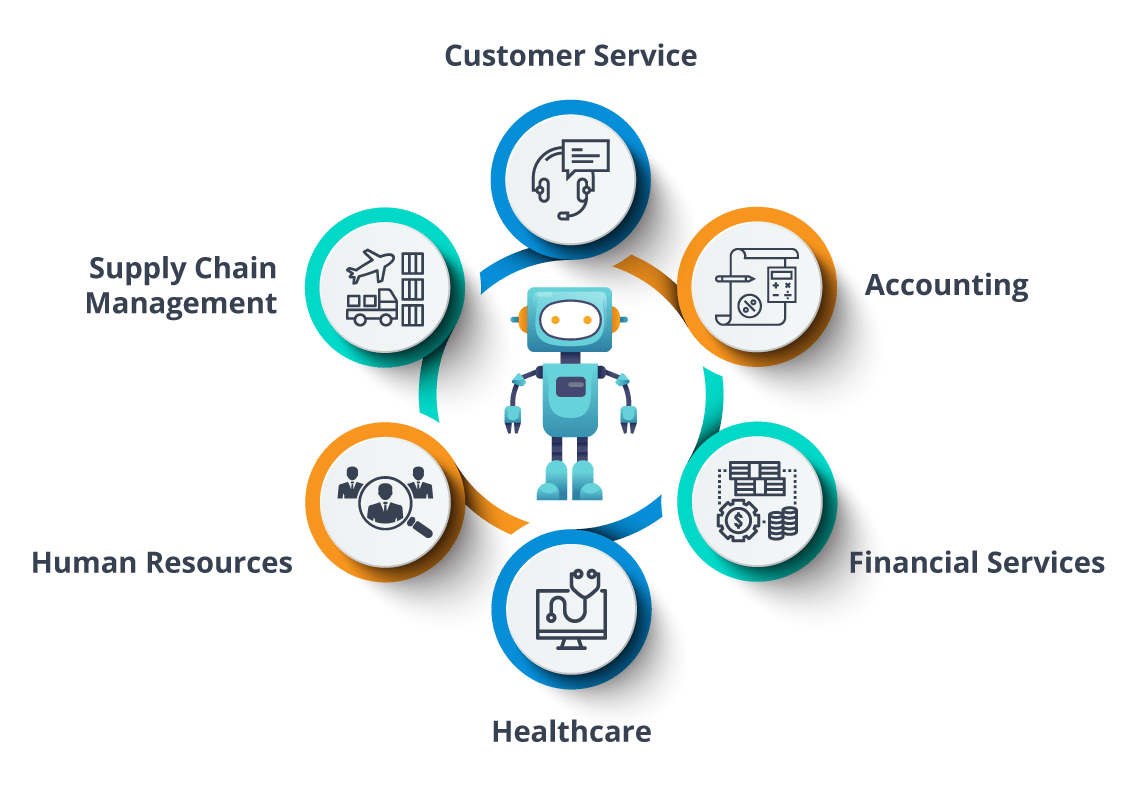
by JBM Digital | Jul 29, 2024 | Data in business optimization & automation

Image Source: FreeImages
Introduction to Data Quality Metrics and KPIs
In today’s data-driven world, organizations increasingly recognize the importance of data quality in driving informed decision-making and achieving business objectives. Data quality metrics and key performance indicators (KPIs) have emerged as crucial tools for measuring and improving data reliability, accuracy, and completeness. This article delves into the world of data quality metrics and KPIs, exploring their significance, common types, and best practices for implementation.

Importance of Data Quality in Effective Measurement
High-quality data is the foundation for effective measurement and decision-making. Organizations that prioritize data quality are better equipped to derive meaningful insights, make informed strategic choices, and drive sustainable growth. Poor data quality, on the other hand, can lead to flawed analyses, suboptimal business decisions, and ultimately, wasted resources. By implementing robust data quality metrics and KPIs, organizations can ensure that their data is fit for purpose, enabling them to confidently make data-driven decisions.
Common Data Quality Metrics and Their Meanings
- Accuracy: Measures the degree to which data reflects the true or intended value.
- Completeness: Assesses the extent to which all required data is present and available.
- Timeliness: Evaluates the currency and freshness of data, ensuring it is up-to-date and relevant.
- Consistency: Examines the coherence and standardization of data across different systems and sources.
- Validity: Determines whether data conforms to predefined business rules and constraints.
- Uniqueness: Identifies and addresses duplicate or redundant data entries.
- Integrity: Assesses the logical and structural soundness of data, including the relationships between data elements.
- Data Accuracy Rate: Percentage of data that is accurate and error-free.
- Data Completeness Rate: Percentage of required data that is present and available.
- Data Timeliness: Measure of the currency and freshness of data, such as the average time between data updates.
- Data Consistency Ratio: Percentage of data that is consistent across different systems and sources.
- Data Validity Rate: Percentage of data that conforms to predefined business rules and constraints.
- Duplicate Data Rate: Percentage of duplicate or redundant data entries.
- Data Integrity Score: Measure of the logical and structural soundness of data, including the relationships between data elements.
Setting Benchmarks for Data Quality Metrics and KPIs
Establishing appropriate benchmarks for data quality metrics and KPIs is essential for effective measurement and improvement. Organizations should consider industry standards, historical performance, and their strategic objectives when setting these benchmarks. Regular review and adjustment of benchmarks are necessary to adapt to changing business requirements and technological advancements.

Numerous tools and technologies are available to support the measurement and management of data quality. These include data quality management software, data profiling and cleansing tools, and data governance platforms. By leveraging these solutions, organizations can automate data quality processes, identify and address data issues, and maintain a comprehensive view of their data landscape.

Best Practices for Improving Data Quality
- Establish a Data Governance Framework: Implement a structured approach to managing data assets, including clear roles, responsibilities, and decision-making processes.
- Implement Data Quality Monitoring: Continuously monitor data quality metrics and KPIs to identify and address issues promptly.
- Invest in Data Cleansing and Enrichment: Regularly clean, standardize, and enrich data to improve its accuracy, completeness, and consistency.
- Foster a Data-Driven Culture: Encourage a culture of data-driven decision-making and empower employees to understand and utilize data effectively.
- Leverage Automation and Technology: Automate data quality processes and leverage advanced technologies, such as machine learning and artificial intelligence, to enhance data quality.
- Continuously Improve and Iterate: Regularly review and refine data quality strategies, metrics, and KPIs to adapt to changing business requirements and technological advancements.
Case Studies: Successful Implementation of Data Quality Metrics and KPIs
Retail Giant Improves Customer Insights with Data Quality Metrics
A leading retail organization implemented a comprehensive data quality management program, which included the adoption of data quality metrics and KPIs. By focusing on metrics such as data accuracy, completeness, and timeliness, the organization was able to enhance the reliability of its customer data. This, in turn, enabled more accurate customer segmentation, targeted marketing campaigns, and improved decision-making, leading to a significant increase in customer satisfaction and revenue growth.
Financial Institution Enhances Risk Management with Data Quality KPIs
A major financial institution recognized the importance of data quality in effective risk management. They developed a set of data quality KPIs, including data validity, integrity, and consistency, to monitor the quality of their risk-related data. By setting clear benchmarks and continuously tracking these KPIs, the institution was able to identify and address data quality issues, leading to more accurate risk assessments and better-informed risk management decisions.
Challenges and Limitations in Measuring Data Quality
While data quality metrics and KPIs offer valuable insights, organizations may face several challenges in their implementation, including:
- Data Complexity: The sheer volume, variety, and complexity of data can make it difficult to define and measure data quality effectively.
- Lack of Standardisation: The absence of industry-wide standards for data quality metrics and KPIs can hinder comparisons and benchmarking.
- Organisational Silos: Fragmented data ownership and siloed data management practices can complicate the measurement and improvement of data quality.
- Resource Constraints: Implementing and maintaining a robust data quality management program may require significant financial and human resources, which can be a barrier for some organizations.
- Changing Business Requirements: As business needs evolve, data quality metrics and KPIs may need to be regularly reviewed and updated to remain relevant and effective.
Conclusion: The Future of Data Quality Metrics and KPIs
As the importance of data-driven decision-making continues to grow, the role of data quality metrics and KPIs will become increasingly vital. Organizations that invest in developing and implementing robust data quality measurement frameworks will be better positioned to derive meaningful insights, make informed strategic choices, and drive sustainable growth. By embracing the power of data quality metrics and KPIs, businesses can enhance their data strategies, optimize their operations, and stay ahead of the competition in the ever-evolving digital landscape.

Hire JBM Digital to optimize your business and unlock the full potential of your data. Our team of experts specializes in developing and implementing data quality strategies, including the deployment of effective metrics and KPIs.
Contact us today to learn more about how we can help you enhance your data-driven decision-making.

by JBM Digital | Jul 15, 2024 | Integration

Image Source: Unsplash
Introduction to Robotic Process Automation (RPA)
Robotic Process Automation (RPA) has emerged as a transformative technology, revolutionizing how businesses operate. This innovative approach to automation allows organizations to streamline repetitive, rule-based tasks, freeing up valuable human resources to focus on more strategic and creative endeavors.

Image Source: WrightStudio
By leveraging software “robots” to mimic human actions, RPA has the potential to enhance productivity, improve accuracy, and drive cost savings across a wide range of industries.
Understanding the Benefits of RPA
The adoption of RPA can unlock a host of benefits for organizations, including:
- Increased Efficiency: RPA can automate repetitive, high-volume tasks, allowing employees to dedicate their time and efforts to more meaningful work. This can lead to significant improvements in productivity and throughput.

- Enhanced Accuracy: Software robots are programmed to execute tasks with precision, reducing the risk of human error and improving the overall quality of work.

- Cost Savings: By automating manual, labor-intensive processes, RPA can help organizations cut operational costs and redirect resources to other strategic initiatives.

- Improved Compliance: RPA can ensure adherence to regulatory requirements and internal policies, minimizing the risk of non-compliance and associated penalties.
- Scalability: RPA solutions can be easily scaled up or down to accommodate fluctuations in workload, providing organizations with the flexibility to adapt to changing business needs.
Key Considerations Before Implementing RPA
Before embarking on an RPA implementation, organizations should carefully consider the following factors:
- Organizational Readiness: Assess the organization’s digital maturity, IT infrastructure, and workforce capabilities to ensure a smooth transition to RPA.
- Process Identification: Thoroughly evaluate business processes to identify the most suitable candidates for automation, considering process complexity, data volume, and the potential for cost savings.
- Technology Selection: Carefully evaluate and select the RPA tools and software that align with the organization’s requirements, integration needs, and IT architecture.
- Change Management: Develop a comprehensive change management strategy to address the cultural and behavioral shifts required for successful RPA adoption.
- Governance and Oversight: Establish clear governance structures, policies, and procedures to ensure the effective management and control of RPA initiatives.
Best Practices for Successful RPA Implementation
To maximize the benefits of RPA, organizations should adhere to the following best practices:
Identifying the Right Processes for Automation
- Conduct a thorough process analysis to identify high-volume, repetitive, and rule-based tasks suitable for automation.

- Prioritise processes with the highest potential for cost savings, efficiency improvements, and scalability.
- Ensure that the selected processes have stable and well-defined inputs, outputs, and decision rules.
- Evaluate RPA vendors and solutions based on features, integration capabilities, ease of use, and alignment with the organization’s IT infrastructure.
- Assess the scalability, flexibility, and security features of the RPA platform to ensure long-term suitability.
- Conduct proof-of-concept trials to validate the selected RPA tools and software before full-scale implementation.
Building a Strong Business Case for RPA Adoption
- Quantify the potential cost savings, productivity gains, and other tangible benefits of RPA implementation.
- Identify the key stakeholders and decision-makers within the organization and tailor the business case to address their specific concerns and priorities.
- Develop a comprehensive implementation plan that outlines the timeline, resource requirements, and expected return on investment.
Overcoming Challenges in RPA Implementation
- Address resistance to change by actively engaging employees and providing comprehensive training and support.
- Ensure effective integration between RPA systems and existing IT infrastructure, including legacy systems and data sources.
- Establish robust governance and control mechanisms to mitigate the risks of RPA deployment, such as data security and compliance.
Measuring and Evaluating the Effectiveness of RPA
- Develop a set of key performance indicators (KPIs) to track the success of RPA initiatives, such as process efficiency, cost savings, and customer satisfaction.
- Regularly monitor and analyze the performance of RPA-enabled processes to identify areas for improvement and optimization.
- Continuously refine the RPA implementation based on feedback and lessons learned to drive ongoing enhancements.
Continuous Improvement and Scaling RPA Initiatives
- Adopt a culture of continuous improvement, regularly reviewing and optimizing RPA-enabled processes to maintain their effectiveness.
- Leverage the success of initial RPA deployments to build momentum and expand the automation footprint across the organization.
- Develop a robust governance framework to manage the scaling and integration of RPA initiatives with the organization’s overall digital transformation strategy.
Training and Upskilling Employees for RPA
- Provide comprehensive training and support to employees to help them understand the benefits of RPA and their role in the automation journey.
- Encourage a culture of innovation and collaboration, where employees are empowered to identify opportunities for process improvement and automation.
- Invest in upskilling and reskilling initiatives to equip employees with the necessary skills and knowledge to work alongside RPA systems effectively.
Ensuring Compliance and Security in RPA
- Implement robust security measures to protect sensitive data and maintain compliance with relevant regulations and industry standards.

- Establish clear policies and procedures for the governance and control of RPA systems, including access management, data handling, and audit trails.
- Regularly review and update the RPA-related compliance and security protocols to address evolving threats and regulatory changes.
Case Studies of Successful RPA Implementations
Case Study 1: Streamlining Financial Processes at a Leading Bank
A major international bank implemented RPA to automate its accounts payable and accounts receivable processes. By deploying software robots to handle tasks such as invoice processing, payment reconciliation, and customer billing, the bank was able to achieve a 40% reduction in processing times and a 20% decrease in operational costs.

The improved accuracy and efficiency of the RPA-enabled processes also led to enhanced customer satisfaction and better compliance with regulatory requirements.
Case Study 2: Optimising HR Onboarding at a Global Consulting Firm
A large consulting firm leveraged RPA to streamline its employee onboarding process. By automating tasks like new hire data entry, document generation, and IT system provisioning, the firm was able to reduce the onboarding time by 50% and free up HR staff to focus on more strategic initiatives. The RPA implementation also helped to ensure a consistent and compliant onboarding experience for all new hires.
Case Study 3: Enhancing Supply Chain Visibility at a Manufacturing Company
A leading manufacturing company deployed RPA to improve the visibility and efficiency of its supply chain operations. Software robots were used to automate the collection and aggregation of data from multiple enterprise systems, providing real-time insights into inventory levels, order fulfillment, and supplier performance. This enabled the company to make more informed decisions, optimize inventory management, and enhance customer responsiveness.
Conclusion
Robotic Process Automation has the power to transform the way organizations operate, driving efficiency, improving accuracy, and unlocking cost savings. By following the best practices outlined in this comprehensive guide, businesses can successfully implement RPA and maximize the benefits of this transformative technology. From identifying the right processes for automation to ensuring compliance and security, the key to RPA success lies in a well-planned and executed implementation strategy, coupled with a culture of continuous improvement and employee engagement.

Hire JBM Digital to optimize your business and unlock the full potential of Robotic Process Automation. Our team of experts can guide you through the implementation process, from identifying the right processes to automating and scaling your RPA initiatives.
Contact us today to learn more.

by JBM Digital | Jul 9, 2024 | Integration

Image Source: FreeImages
Introduction to Strategic Consultancy
Strategic consultancy is a powerful tool that helps businesses navigate the ever-evolving landscape of the modern business world. It involves the expertise of highly skilled professionals who work closely with organizations to identify their unique challenges, analyze their current state, and develop tailored strategies to drive growth, improve efficiency, and achieve long-term success.

In this article, we will explore the role of strategic consultancy in business transformation, the benefits it offers, and how it can help businesses unlock new opportunities for success.
Businesses today face many challenges, from rapidly changing market conditions and technological advancements to shifting consumer preferences and increased competition. In this dynamic environment, strategic consultancy plays a crucial role in guiding organizations through the process of transformation. By providing an objective and data-driven perspective, strategic consultants help businesses assess their current state, identify areas for improvement, and develop comprehensive strategies to address their most pressing issues.
Benefits of Strategic Consultancy
The advantages of engaging a strategic consultancy firm are numerous and far-reaching. Some of the key benefits include:
- Improved Decision-Making: Strategic consultants offer valuable insights and recommendations based on their extensive industry knowledge and analytical expertise, enabling businesses to make more informed and strategic decisions.
- Enhanced Efficiency: By identifying and addressing operational bottlenecks, strategic consultants help businesses streamline their processes, optimize resource allocation, and improve overall efficiency.
- Competitive Advantage: Strategic consultancy helps organizations stay ahead of the curve, anticipate market trends, and develop innovative solutions that give them a competitive edge.
- Accelerated Growth: Effective strategic consultancy can unlock new growth opportunities, whether it’s expanding into new markets, launching new products or services, or optimizing existing operations.
- Increased Profitability: By improving efficiency, reducing costs, and driving growth, strategic consultancy can have a direct and positive impact on a business’s bottom line.
Understanding the Challenges Faced by Businesses
Businesses today face a wide range of challenges, from navigating complex regulatory environments and managing supply chain disruptions to adapting to changing consumer behaviors and staying ahead of technological advancements.

Some of the most common challenges include:
- Lack of Clarity in Strategic Direction
- Inefficient Operational Processes
- Difficulty in Adapting to Market Changes
- Challenges in Attracting and Retaining Talent
- Difficulty in Measuring and Tracking Key Performance Indicators (KPIs)
- Resistance to Change within the Organisation
How Strategic Consultancy Helps in Identifying Opportunities
Strategic consultants possess the expertise and analytical capabilities to help businesses identify and capitalize on new opportunities. By conducting in-depth analyses of the organization, the industry, and the competitive landscape, they can uncover untapped potential and develop innovative strategies to unlock growth. This may involve:
- Identifying new market segments or geographic expansion opportunities
- Developing new products or services that address unmet customer needs
- Optimizing existing operations to improve efficiency and profitability
- Leveraging emerging technologies to enhance business capabilities
- Implementing effective change management strategies to navigate organizational transformation
Key Components of a Successful Strategic Consultancy Process
A successful strategic consultancy engagement typically involves a comprehensive and structured approach, including the following key components:
- Diagnostic Assessment: The consultants conduct a thorough analysis of the organization, its industry, and the competitive environment to gain a deep understanding of the challenges and opportunities.
- Strategic Planning: Based on the diagnostic assessment, the consultants work closely with the client to develop a comprehensive strategic plan that outlines the goals, objectives, and specific action steps to achieve them.
- Implementation Support: The consultants provide hands-on support and guidance to ensure the successful execution of the strategic plan, including change management, project management, and ongoing monitoring and evaluation.
- Continuous Improvement: Strategic consultancy is an ongoing process, and the consultants work with the client to regularly review and refine the strategic plan, adapting to changing circumstances and new opportunities.
Case Studies: Real-Life Examples of Successful Strategic Consultancy Projects
Case Study 1: Transforming a Struggling Retail Brand
A well-established retail brand was facing declining sales, increased competition, and a disconnect with its target audience. The strategic consultancy firm conducted a comprehensive analysis, uncovering several key issues, including an outdated brand identity, inefficient supply chain management, and a lack of customer-centric initiatives. The consultants developed a strategic roadmap that included a brand refresh, supply chain optimization, and the implementation of data-driven customer engagement strategies. Within two years, the client experienced a 25% increase in revenue and a 30% improvement in customer satisfaction.

Case Study 2: Driving Digital Transformation in a Financial Services Firm
A leading financial services firm recognized the need to modernize its operations and embrace digital technologies to remain competitive. The strategic consultancy firm worked closely with the client to assess the current state of their digital capabilities, identify areas for improvement, and develop a comprehensive digital transformation strategy. This included the implementation of new technology solutions, the upskilling of the workforce, and the redesign of customer-facing processes. As a result, the client saw a 35% increase in operational efficiency, a 20% reduction in customer service costs, and a 15% boost in customer retention.

Choosing the Right Strategic Consultancy Firm
Selecting the right strategic consultancy firm is crucial for the success of any business transformation initiative. When evaluating potential partners, businesses should consider the following factors:
- Industry Expertise: Ensure the consultancy firm has a proven track record and deep understanding of the client’s industry and the unique challenges it faces.
- Analytical Capabilities: Look for a firm that can leverage data-driven insights and cutting-edge analytical tools to develop well-informed strategies.
- Implementation Support: Assess the consultancy’s ability to provide hands-on support and guidance throughout the implementation process.
- Collaborative Approach: Prioritise firms that demonstrate a collaborative and client-centric approach, working closely with the organization to tailor solutions to its specific needs.
- Proven Results: Review the consultancy’s case studies and client testimonials to ensure they have a track record of delivering tangible, measurable results.
The Future of Strategic Consultancy
As businesses continue to navigate an increasingly complex and dynamic landscape, the role of strategic consultancy is expected to become even more crucial. With the rapid pace of technological change, evolving customer preferences, and heightened competition, organizations will need to rely on the expertise and insights of strategic consultants to stay ahead of the curve.
Some of the key trends shaping the future of strategic consultancy include:
- Increased Focus on Digital Transformation: Strategic consultants will play a pivotal role in guiding businesses through the complexities of digital transformation, helping them leverage emerging technologies to drive innovation and operational excellence.
- Emphasis on Sustainability and Social Responsibility: Businesses are increasingly prioritizing environmental, social, and governance (ESG) factors, and strategic consultants will need to incorporate these considerations into their strategic planning and recommendations.
- Adoption of Advanced Analytics and AI: Strategic consultants will leverage the power of data analytics, artificial intelligence, and machine learning to uncover deeper insights, predict future trends, and develop more informed and effective strategies.
- Collaborative Partnering: The future of strategic consultancy will involve closer, more collaborative partnerships between consultants and their clients, with a shared focus on driving long-term, sustainable success.
Conclusion: Embracing Strategic Consultancy for Long-Term Success
In today’s fast-paced and highly competitive business environment, strategic consultancy has become an essential tool for organizations seeking to navigate challenges, unlock new opportunities, and achieve long-term success. By leveraging the expertise, analytical capabilities, and industry insights of strategic consultants, businesses can develop comprehensive strategies, optimize their operations, and position themselves for sustained growth and profitability.
Hire JBM Digital to get consulting and optimize your business. Our team of experienced strategic consultants can help you unlock new opportunities for success and drive long-term growth.
Contact us today to learn more.

by JBM Digital | Jul 4, 2024 | Integration
The Power of Predictive Analytics: Anticipating Business Needs for Future Success

Image Source: Unsplash
Introduction to Predictive Analytics
In today’s rapidly evolving business landscape, the ability to make informed decisions and anticipate future trends is crucial for staying ahead of the competition. This is where the power of predictive analytics comes into play. Predictive analytics is the process of using statistical models, machine learning algorithms, and data mining techniques to analyze historical data and make predictions about future events, behaviors, and outcomes.

Image source: Pexels
As an experienced business professional, I have witnessed firsthand the transformative impact that predictive analytics can have on organizations. By leveraging the insights gleaned from data, businesses can make more strategic and informed decisions, optimize their operations, and ultimately, achieve greater success.
The Importance of Predictive Analytics in Business
In the ever-changing business world, the ability to anticipate and respond to shifting market conditions, customer preferences, and emerging trends can mean the difference between thriving and merely surviving. Predictive analytics provides businesses with a powerful tool to stay ahead of the curve, allowing them to make data-driven decisions that are grounded in real-world insights.

Image source: Linkedln
By harnessing the power of predictive analytics, organizations can gain a deeper understanding of their customers, identify new growth opportunities, optimize their processes, and mitigate risks more effectively. This strategic advantage can translate into improved operational efficiency, enhanced customer experiences, and ultimately, increased profitability.
Benefits of Using Predictive Analytics
The benefits of incorporating predictive analytics into your business strategy are numerous and far-reaching. Here are some of the key advantages:
- Improved Decision-Making: Predictive analytics provides businesses with valuable insights that can inform strategic decision-making, enabling them to make more informed choices and minimize the risk of costly mistakes.
- Enhanced Customer Experiences: By analyzing customer data, businesses can gain a deeper understanding of their target audience, anticipate their needs, and tailor their products and services accordingly, leading to improved customer satisfaction and loyalty.
- Optimized Operations: Predictive analytics can help businesses identify inefficiencies, streamline processes, and allocate resources more effectively, resulting in cost savings and increased productivity.
- Competitive Advantage: By leveraging predictive analytics to anticipate market trends and stay ahead of the competition, businesses can position themselves as industry leaders and maintain a competitive edge.
- Proactive Risk Management: Predictive analytics can help businesses identify and mitigate potential risks, enabling them to take proactive measures to protect their assets and reputation.
How Predictive Analytics Works
At its core, predictive analytics involves the use of statistical models, machine learning algorithms, and data mining techniques to analyze historical data and make predictions about future events. 
Image source: Pexels
The process typically involves the following steps:
- Data Collection: Gathering and aggregating relevant data from various sources, such as customer records, sales figures, market trends, and industry benchmarks.
- Data Preparation: Cleaning, transforming, and structuring the data to ensure its accuracy, completeness, and relevance for the analysis.
- Model Building: Selecting and applying the appropriate statistical or machine learning models to the prepared data, to identify patterns, trends, and relationships that can be used to make predictions.
- Model Evaluation: Assessing the accuracy and reliability of the predictive models by testing them against new data or using cross-validation techniques.
- Deployment and Monitoring: Implementing the predictive models in the business environment and continuously monitoring their performance to ensure they remain relevant and accurate over time.
By following this systematic approach, businesses can leverage the power of predictive analytics to uncover valuable insights and make informed decisions that drive their success.
Common Applications of Predictive Analytics in Different Industries
Predictive analytics has a wide range of applications across various industries, and its use cases continue to evolve as technology advances.

Here are some examples of how different sectors are leveraging the power of predictive analytics:
- Retail: Predicting customer buying behavior, optimizing inventory and supply chain management, and personalizing marketing campaigns.
- Finance: Detecting fraud, assessing credit risk, and forecasting market trends and investment opportunities.
- Healthcare: Predicting patient outcomes, identifying high-risk individuals, and optimizing resource allocation.
- Manufacturing: Predicting equipment failures, optimizing production processes, and improving quality control.
- Telecommunications: Predicting customer churn, personalizing service offerings, and optimizing network performance.
Regardless of the industry, the common thread is the ability of predictive analytics to transform data into actionable insights that can drive business success.
Key Steps in Implementing Predictive Analytics in Your Business
Implementing predictive analytics in your business can be a transformative process, but it requires a well-planned and structured approach. Here are the key steps to consider:
- Define Your Goals: Clearly articulate the specific business objectives you aim to achieve through the use of predictive analytics, such as improving customer retention, optimizing operations, or identifying new revenue streams.
- Assess Your Data Readiness: Evaluate the quality, quantity, and accessibility of the data you have available, and identify any gaps or areas that need improvement.
- Choose the Right Predictive Models: Select the statistical or machine learning models that are best suited to your business needs and the available data.
- Assemble a Skilled Team: Ensure you have the right mix of data scientists, analysts, and subject matter experts to effectively implement and maintain your predictive analytics initiatives.
- Integrate Predictive Insights: Develop a plan to seamlessly integrate the insights generated by your predictive models into your decision-making processes and business operations.
- Continuously Evaluate and Refine: Regularly monitor the performance of your predictive models, and be prepared to adapt and refine your approach as your business needs and the market landscape evolve.
By following these key steps, you can lay the foundation for a successful predictive analytics implementation that delivers tangible business value.
Challenges and Limitations of Predictive Analytics
While the potential benefits of predictive analytics are significant, it’s important to be aware of the challenges and limitations associated with its implementation. Some of the key considerations include:
- Data Quality and Availability: The accuracy and reliability of predictive models are heavily dependent on the quality and completeness of the data used to train them. Addressing data-related issues can be a significant hurdle for many organizations.
- Complexity and Technical Expertise: Implementing and maintaining predictive analytics solutions often requires a high level of technical expertise, which can be a challenge for businesses with limited resources or in-house capabilities.
- Ethical and Privacy Concerns: The use of predictive analytics can raise concerns about data privacy, algorithmic bias, and the ethical implications of using personal information to make decisions.
- Resistance to Change: Adopting a data-driven, predictive approach to decision-making can be a significant cultural shift for some organizations, and overcoming resistance to change can be a significant challenge.
- Ongoing Maintenance and Monitoring: Predictive models require continuous monitoring and adjustment to ensure they remain accurate and relevant over time, which can be a resource-intensive process.
By being aware of these challenges and limitations, businesses can develop a more realistic and informed approach to implementing predictive analytics, increasing the likelihood of success.
Best Practices for Successful Predictive Analytics Implementation
To maximize the benefits of predictive analytics and overcome the associated challenges, it’s essential to follow a set of best practices. Here are some key considerations:
- Establish a Robust Data Management Strategy: Ensure that your data is accurate, complete, and accessible and that you have the necessary processes and tools in place to effectively manage and maintain your data.
- Build a Multidisciplinary Team: Assemble a team of data scientists, analysts, subject matter experts, and business stakeholders to collaborate on the design, implementation, and ongoing refinement of your predictive analytics initiatives.
- Align Predictive Analytics with Business Objectives: Ensure that your predictive analytics initiatives are closely aligned with your overall business strategy and the specific goals you aim to achieve.
- Adopt a Continuous Improvement Mindset: Regularly evaluate the performance of your predictive models, and be prepared to adapt and refine your approach as your business needs and the market landscape evolve.
- Prioritise Ethical and Responsible Data Practices: Establish clear policies and guidelines to ensure that your use of predictive analytics adheres to ethical principles and respects individual privacy.
- Communicate and Educate: Effectively communicate the value and benefits of predictive analytics to stakeholders at all levels of the organization, and provide the necessary training and support to ensure widespread adoption and understanding.
By following these best practices, businesses can maximize the impact of their predictive analytics initiatives and drive sustainable, long-term success.
Case Studies Showcasing the Power of Predictive Analytics
The transformative power of predictive analytics is best illustrated through real-world case studies. Here are a few examples of how organizations have leveraged this technology to achieve remarkable results:
- Retail Optimisation: A leading e-commerce retailer used predictive analytics to forecast customer demand, optimize inventory levels, and personalize product recommendations, resulting in a 15% increase in revenue and a 20% reduction in inventory costs.
- Fraud Detection: A financial services company implemented a predictive analytics model to detect fraudulent transactions, leading to a 30% reduction in fraud-related losses and a significant improvement in customer trust and satisfaction.
- Predictive Maintenance: A manufacturing company used predictive analytics to forecast equipment failures and schedule proactive maintenance, resulting in a 25% decrease in unplanned downtime and a 12% increase in overall equipment effectiveness.
- Churn Prediction: A telecommunications provider leveraged predictive analytics to identify customers at risk of churning, enabling them to implement targeted retention strategies and reduce their customer churn rate by 18%.
These case studies demonstrate the tangible and measurable benefits that predictive analytics can bring to organizations across various industries, from enhanced operational efficiency to improved customer experiences and increased profitability.
The Future of Predictive Analytics
As technology continues to evolve and the volume of data generated by businesses continues to grow, the role of predictive analytics in driving business success is only set to increase. Some of the key trends and developments that are shaping the future of predictive analytics include:
- Artificial Intelligence and Machine Learning: The integration of advanced AI and machine learning algorithms will enable predictive models to become increasingly sophisticated, accurate, and autonomous.
- Internet of Things (IoT) and Edge Computing: The proliferation of connected devices and the ability to process data closer to the source will enable real-time, predictive insights that can be acted upon more quickly.
- Prescriptive Analytics: The next evolution of predictive analytics will involve prescriptive models that not only forecast future outcomes but also recommend the optimal course of action to achieve desired results.
- Democratization of Predictive Analytics: The development of user-friendly, self-service predictive analytics tools will empower more businesses, regardless of size or technical expertise, to leverage the power of data-driven decision-making.
- Ethical and Responsible AI: As the use of predictive analytics becomes more widespread, there will be a greater emphasis on ensuring that these technologies are developed and deployed in a transparent, accountable, and ethical manner.
By staying attuned to these emerging trends and developments, businesses can position themselves to harness the full potential of predictive analytics and drive sustainable, long-term success.
Conclusion
In today’s fast-paced and highly competitive business environment, the ability to anticipate future trends and make informed, data-driven decisions is essential for success. Predictive analytics has emerged as a powerful tool that can help organizations of all sizes and across various industries gain a strategic advantage, optimize their operations, and achieve their goals.
By leveraging the insights generated by predictive models, businesses can make more informed decisions, enhance customer experiences, and position themselves for long-term growth and profitability. As the field of predictive analytics continues to evolve, the opportunities for businesses to unlock new sources of value and drive innovation are endless.
If you’re ready to harness the power of predictive analytics to optimize your business operations and drive future success, I encourage you to consider partnering with JBM Digital. Our team of experienced data scientists and business consultants can help you develop and implement a customized predictive analytics strategy that aligns with your unique goals and challenges.
Contact us today to learn more about how we can help you stay ahead of the curve and achieve your business objectives.






















Recent Comments